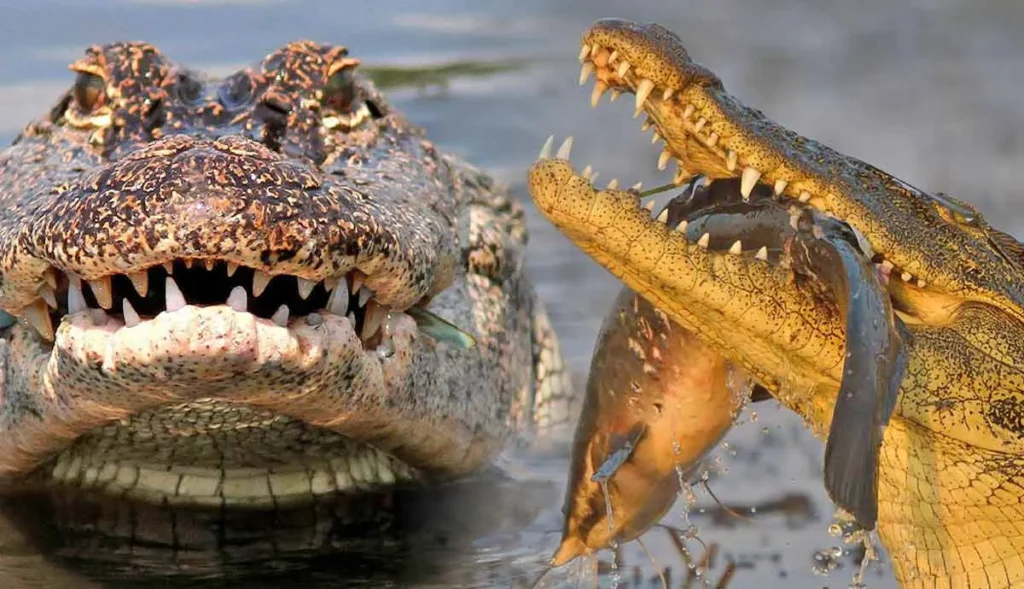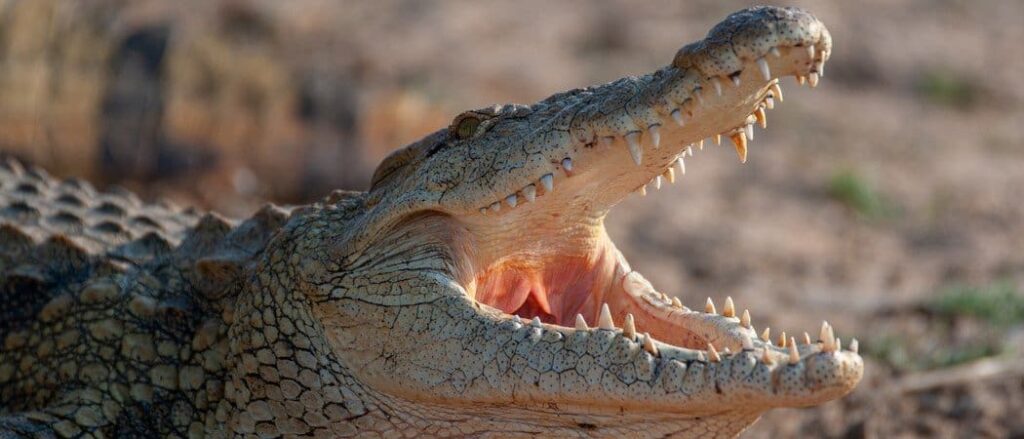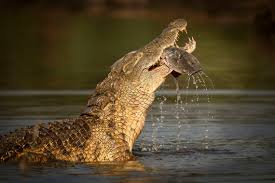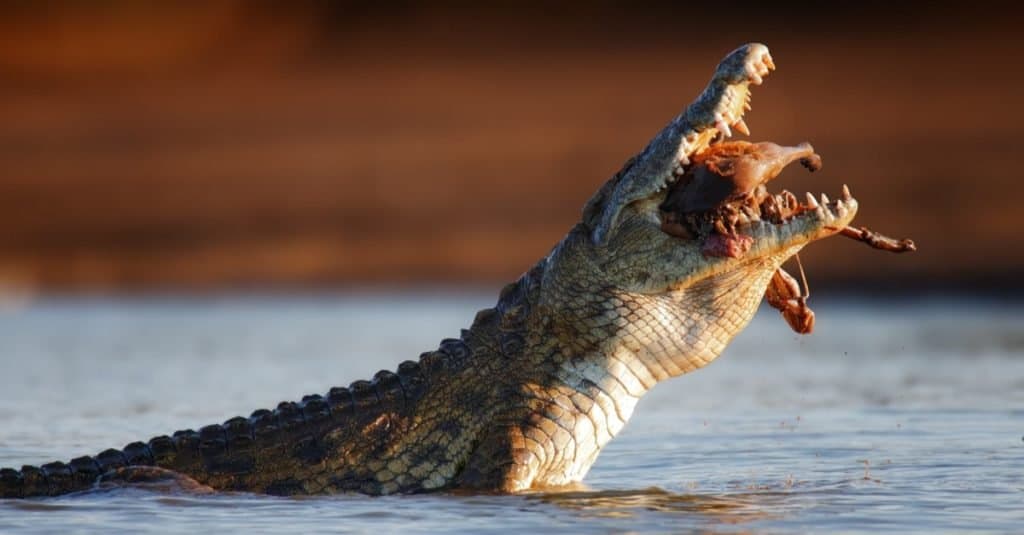Feeding Frequency of Nile Crocodiles in the Wild
Feeding Frequency of Nile Crocodiles in the Wild The Nile crocodile (Crocodylus niloticus) is a formidable predator and one of the largest reptile species in the world. Native to freshwater habitats across sub-Saharan Africa, this crocodile plays a critical role in maintaining the ecological balance of its ecosystem. Understanding the feeding frequency of Nile crocodiles in the wild offers valuable insights into their behavior, survival strategies, and how they adapt to fluctuating resources. This article explores the factors influencing the feeding habits of Nile crocodiles, including age, prey availability, seasonal variations, and environmental pressures.
General Feeding Behavior of Nile Crocodiles

Nile crocodiles are opportunistic predators with a varied diet that includes fish, amphibians, reptiles, birds, and mammals. As ambush predators, they rely on stealth to capture prey, often lying motionless in the water until a suitable target comes close. They typically consume large portions in a single feeding session, allowing them to survive extended periods without food. These unique adaptations make their feeding behavior distinct among large carnivorous animals and have contributed to their success as apex predators.
Certainly! Here’s a table summarizing the key points from the article on the feeding frequency of Nile crocodiles in the wild:
| Category | Details |
|---|---|
| Introduction | Overview of Nile crocodile’s predatory nature and the importance of understanding feeding frequency. |
| General Feeding Behavior | – Opportunistic and ambush predators. – Diet includes fish, amphibians, reptiles, birds, and mammals. |
| Feeding Frequency by Life Stage | |
| Juveniles | – High metabolic rate; need to feed frequently. – Diet: insects, crustaceans, small fish. |
| Sub-adults | – Feed less frequently than juveniles but more than adults. – Diet: larger fish, small mammals. |
| Adults | – Slower metabolism; can endure long fasting periods. – Diet: large animals like antelope or small hippos, which allow extended intervals between feeds. |
| Environmental Factors Affecting Feeding | |
| Seasonal Changes | – Wet season: increased prey availability, higher feeding frequency. – Dry season: reduced prey, longer fasting. |
| Habitat Type | – River systems: potentially higher feeding frequency due to abundant fish. – Lakes and estuaries: less frequent feeding depending on prey availability. |
| Temperature & Climate Influence | – Metabolism slows in cooler temperatures, leading to reduced feeding frequency. |
| Prey Availability & Competition | – Higher prey density allows more frequent feeding. – Competition with other crocodiles and predators can reduce feeding opportunities. |
| Energetic Needs & Fasting Capabilities | – Adapted to consume large meals and store fat reserves. – Capable of fasting during food scarcity. |
| Conservation Implications | – Feeding behavior impacts growth, reproduction, and survival rates. – Conservation concerns arise when food scarcity drives them towards human areas. |
| Conclusion | Summary of adaptability and survival strategies. Importance of research to inform conservation and balance in the ecosystem. |
Feeding Frequency in Different Life Stages
Juveniles
Young crocodiles have a faster metabolism and require more frequent feeding than adults. Juveniles primarily feed on small prey such as insects, crustaceans, and small fish, which are abundant in shallow waters. Their frequent feeding supports rapid growth, allowing them to reach a size where they can fend off predators and expand their diet.
Sub-adults
As they grow, Nile crocodiles shift to larger prey and begin to adopt the ambush techniques characteristic of adults. Sub-adults still have a relatively high metabolic rate, so they feed more often than fully mature crocodiles. Their prey choices expand to include larger fish and small mammals, which better meet their growing energy requirements. However, their feeding frequency begins to slow down as they approach adulthood.
Adults
Adult Nile crocodiles have slower metabolisms and can endure long fasting periods, sometimes weeks or even months, between meals. Capable of consuming large animals such as antelope or even small hippos, they can go without food for extended intervals after a significant meal. Their ability to extract maximum energy from large prey and endure fasting makes them highly adaptable to environments where food availability fluctuates.
Environmental Factors Affecting Feeding Frequency

Seasonal Changes
In regions with distinct wet and dry seasons, prey availability fluctuates significantly, impacting feeding frequency. During the wet season, when prey animals are more abundant and accessible, Nile crocodiles feed more frequently. In contrast, during the dry season, when water levels drop and prey becomes scarce, crocodiles adjust by reducing their feeding frequency, often enduring extended fasting.
Habitat Type
The type of habitat influences food sources and feeding habits. For example, crocodiles in river systems, where fish are abundant, may have a higher feeding frequency than those in lakes or estuarine environments. In rivers with seasonal migrations of fish or amphibians, crocodiles benefit from brief feeding windows where prey is plentiful.
Temperature and Climate Influence

Temperature significantly impacts crocodile metabolism and, by extension, their feeding frequency. Cold-blooded reptiles like Nile crocodiles rely on external temperatures to regulate their body heat, and their metabolic rate decreases in cooler weather. This metabolic slowdown allows them to survive with less frequent feedings, conserving energy during colder or less resource-abundant periods.
Prey Availability and Competition
The abundance of prey is crucial in determining feeding frequency. In areas with dense prey populations, crocodiles can feed more frequently. However, competition among crocodiles and with other predators may also reduce food intake opportunities. Juveniles, in particular, face competition with older crocodiles and other aquatic predators, influencing both their diet and feeding habits. In habitats where prey density is low, Nile crocodiles compensate by feeding less frequently and relying on their ability to fast.
Energetic Needs and Fasting Capabilities

Nile crocodiles have evolved remarkable adaptations to survive periods of food scarcity. Their ability to consume large meals and store fat reserves enables them to withstand extended fasting, especially in regions with fluctuating food availability. This adaptation is critical for their survival in habitats where prey density changes with the seasons. Compared to other crocodilian species, Nile crocodiles are among the most adept at fasting, an advantage that contributes to their resilience.
Implications of Feeding Frequency on Nile Crocodile Behavior and Conservation
The feeding behavior of Nile crocodiles has significant implications for their growth, reproductive rates, and survival. Crocodiles in areas with abundant prey generally experience faster growth rates and reach reproductive maturity earlier. Conservationists must consider the feeding frequency and behavior of Nile crocodiles when managing populations near human habitats. As human encroachment increases, the crocodiles’ search for food often leads them closer to livestock and human settlements, leading to potential conflicts.
Conclusion
Understanding the feeding frequency of Nile crocodiles in the wild reveals essential aspects of their adaptability and survival strategies. Varying across life stages, habitat types, and environmental conditions, these feeding behaviors enable them to thrive in Africa’s often challenging ecosystems. Continued research into the dietary patterns of Nile crocodiles can inform conservation strategies, especially in regions where habitat loss and human activity threaten their populations. As apex predators, Nile crocodiles play a critical role in maintaining ecological balance, and insights into their feeding habits help ensure their ongoing survival.
Here are some tips for understanding and studying the feeding frequency of Nile crocodiles in the wild:
Observe Habitat Types
Nile crocodiles adapt their feeding behavior based on habitat. In river systems with abundant fish, they may feed more often than in lakes or estuaries. Knowing habitat types can help you predict feeding patterns.
Consider Seasonal Changes
During the wet season, crocodiles feed more frequently due to increased prey availability. In the dry season, they may go longer between meals. Studying seasonal shifts provides valuable insights into their feeding habits.
Differentiate by Life Stage
Feeding frequency changes with life stage—juveniles need to eat more frequently than adults, who can endure long fasting periods. This differentiation helps in tracking their growth and dietary needs.
Note Prey Size and Type
Nile crocodiles often eat large prey, which allows them to go for extended periods without feeding. Observing the type and size of prey consumed can help estimate the crocodile’s fasting ability and energy requirements.
Account for Temperature and Climate
Being ectothermic (cold-blooded), their metabolism slows in cooler temperatures, reducing the need to feed as often. Studying environmental temperatures can aid in understanding seasonal feeding variations.
Observe Behavior Around Human Habitats
Crocodiles may venture near human areas when natural food sources are scarce. Watching their interaction with human settlements can reveal how scarcity impacts their feeding habits.
Research Local Competition
In areas with high predator competition, crocodiles might have reduced feeding opportunities. Observing crocodile density and other predators in the area can provide insights into feeding challenges.
Learn from Local Conservation Efforts
Conservation programs often monitor crocodile feeding to minimize human-wildlife conflicts. Engaging with conservation data can give you real-world applications of feeding behavior research.
FAQs: Feeding Frequency of Nile Crocodiles
How often do Nile crocodiles eat in the wild?
Nile crocodiles may eat every few days or go for weeks or even months without food, especially adult crocodiles. The feeding frequency depends on factors like age, prey availability, season, and habitat.
Why do adult Nile crocodiles eat less frequently than juveniles?
Adult Nile crocodiles have slower metabolisms and can consume large prey in a single meal, allowing them to survive long periods without food. Juveniles, with higher metabolic rates, need smaller, more frequent meals to support their rapid growth.
What types of prey do Nile crocodiles typically eat?
Their diet includes fish, amphibians, birds, and mammals. Larger adults can even take down antelope, wildebeest, and other large mammals, which provide more sustenance and allow for extended fasting.
How does the season affect feeding behavior?
During the wet season, prey is more abundant, so crocodiles tend to feed more frequently. In the dry season, as water levels drop and prey becomes scarce, they adapt by feeding less often and enduring longer fasting periods.
Do Nile crocodiles eat the same types of prey in every habitat?
No, prey availability differs by habitat. In river systems, they may consume more fish, while in areas near human settlements, they might occasionally prey on livestock or scavenge near populated areas.
Can Nile crocodiles survive without food for long periods?
Yes, adult Nile crocodiles can survive for months without food if necessary. They store fat in their bodies and reduce their metabolic rate, allowing them to endure prolonged fasting, especially during dry seasons or in food-scarce environments.
How do temperature and climate affect their feeding habits?
Being cold-blooded, their metabolism slows in cooler weather, reducing their need to feed as often. They are more active in warmer seasons when prey is also more readily available.
Are there conservation concerns related to their feeding behavior?
Yes, when natural prey is scarce, crocodiles sometimes move closer to human settlements in search of food, leading to potential conflicts. Conservation efforts focus on minimizing these conflicts to protect both human and crocodile populations.
Do Nile crocodiles compete with other predators for food?
Yes, especially in regions with high predator populations, they compete with other crocodiles and predators for limited resources. This competition can affect feeding frequency, especially for younger or smaller crocodiles.
How does feeding frequency impact the growth and health of Nile crocodiles?
Crocodiles with consistent food access grow faster and reach reproductive maturity sooner. Limited food availability, on the other hand, can slow growth, affect reproductive health, and increase the risk of human-crocodile conflicts as they seek out alternative food sources.
